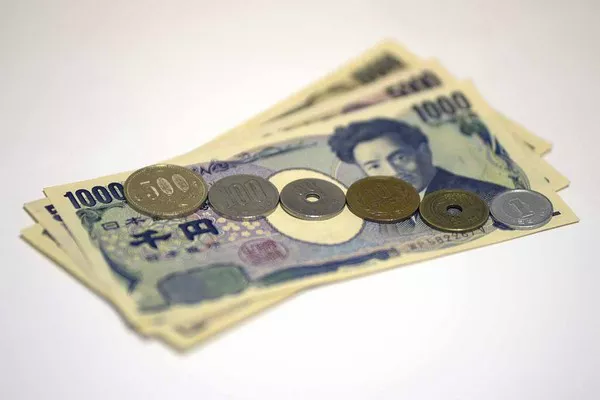In the fascinating realm of numismatics, the 5 yen coin holds a special place as a symbol of Japan’s rich cultural heritage and economic identity. Despite its modest denomination, the 5 yen coin carries a wealth of historical significance and intricate design elements that capture the essence of Japanese traditions. This article serves as a comprehensive guide, unraveling the story behind Japan’s 5 yen coin, exploring its history, design features, cultural relevance, and the role it plays in the nation’s economic landscape.
Historical Evolution of 5 Yen Coin:
The journey of the 5 yen coin begins in the Meiji era (1868–1912), a pivotal period in Japan’s history marked by modernization and Western influence. Introduced in 1870, the 5 yen coin was crafted from a combination of copper and nickel, representing a departure from traditional Japanese currency materials. Over the years, the coin underwent subtle design changes, mirroring the socio-political transformations in the country.
One distinctive aspect of the 5 yen coin is its central hole, a feature that has endured since its inception. This hole serves both practical and aesthetic purposes, allowing for easy handling and transportation while providing a canvas for intricate designs that showcase Japan’s unique cultural symbols.
Design Elementsof 5 Yen Coin:
The obverse side of the 5 yen coin typically features a depiction of a rice stalk, paying homage to Japan’s deep-rooted agricultural traditions. Surrounding the rice stalk are inscriptions denoting the coin’s denomination and the era of issuance. The reverse side commonly displays the numerical value of the coin along with the iconic central hole, adorned with the paulownia flower and characters representing “five yen” in Japanese script.
The central hole, in addition to its practical utility, holds cultural significance. The paulownia flower, an emblem of the Japanese government, adds a layer of symbolism to the coin. The intricate designs reflect the attention to detail and artistic sensibility that permeate Japanese craftsmanship.
Cultural and Spiritual Significance of 5 Yen Coin:
In the realm of Japanese spirituality, the 5 yen coin occupies a special place. Shintoism, a traditional Japanese religion, considers the number five sacred and believed to have the power to ward off evil spirits. As a result, the 5 yen coin is often associated with good luck and prosperity. It is a common practice for individuals to use these coins in various cultural rituals, such as offerings at shrines or as talismans to attract positive energy.
Beyond its spiritual connotations, the 5 yen coin is deeply embedded in everyday Japanese customs. It is not uncommon to find these coins tied to small charms or incorporated into traditional decorations during festivals and celebrations.
Economic Implications of 5 Yen Coin:
While the 5 yen coin may seem like a nominal denomination, its widespread circulation plays a crucial role in Japan’s economic ecosystem. The coin is widely accepted in vending machines, public transportation, and small businesses, facilitating seamless transactions for everyday items. The convenience of the 5 yen coin contributes to the efficiency of Japan’s cash-based economy.
The affordability of items priced in multiples of five yen also aligns with the coin’s denomination, making it a practical choice for small transactions. This prevalence in daily transactions ensures a steady demand for the 5 yen coin, further solidifying its role in the country’s economic infrastructure.
Collectibility and Numismatics of 5 Yen Coin:
The allure of the 5 yen coin extends beyond its utilitarian function, attracting numismatists and coin collectors worldwide. Enthusiasts are drawn to the coin’s unique design elements, historical significance, and the challenge of assembling a comprehensive collection spanning different eras. Rare editions, variations, and minting errors add a layer of intrigue to the pursuit of acquiring and studying 5 yen coins.
The numismatic value of certain editions can far exceed their face value, turning these coins into coveted collector’s items. The vibrant community of coin collectors actively engages in trading, auctions, and discussions, contributing to the broader cultural appreciation of Japan’s numismatic history.
The Future of the 5 Yen Coin:
As Japan navigates the evolving landscape of global finance and technology, the future of the 5 yen coin becomes a subject of contemplation. In an era where digital transactions are gaining prominence, physical coins face challenges in maintaining their relevance. However, the 5 yen coin’s deep cultural roots, economic significance, and collectible appeal suggest that it will endure as more than just a medium of exchange.
The potential for advancements in materials, coupled with innovative design concepts, may contribute to the continued relevance and adaptability of the 5 yen coin. Whether it be as a symbol of tradition, a cultural artifact, or a practical tool in daily transactions, the 5 yen coin appears poised to navigate the future with resilience and relevance.
See Also: 5 Key Factors Driving the Yen
Conclusion:
Japan’s 5 yen coin, with its rich history, intricate design, and cultural symbolism, stands as a testament to the nation’s unique identity. From its origins in the Meiji era to its enduring presence in contemporary Japan, the coin weaves together elements of tradition, spirituality, and economic utility. As we delve into the nuances of the 5 yen coin, we uncover not just a piece of currency but a multifaceted symbol that reflects the interconnected threads of Japan’s past, present, and future.


